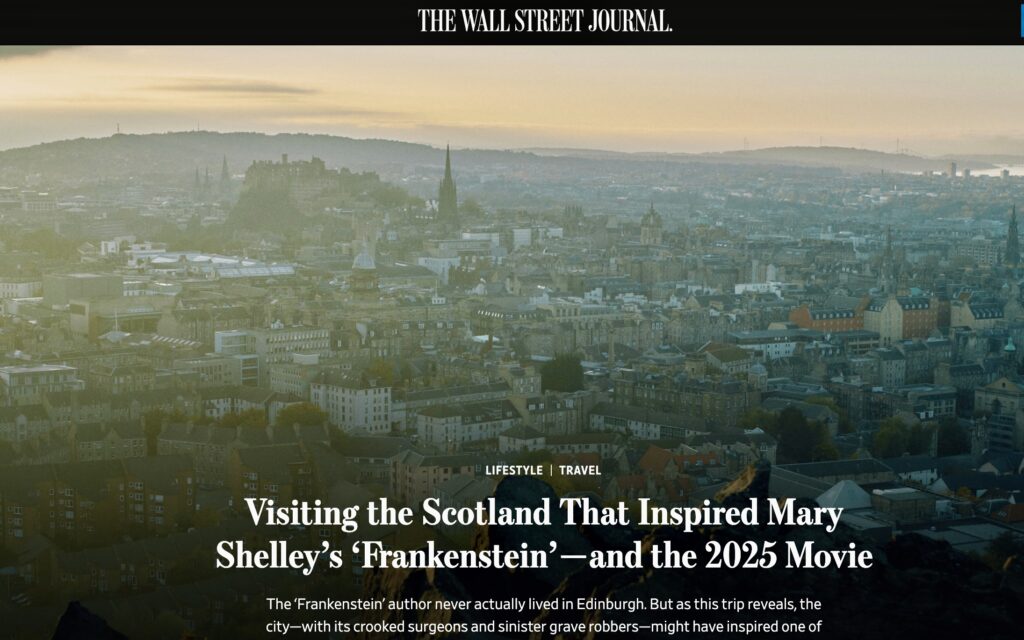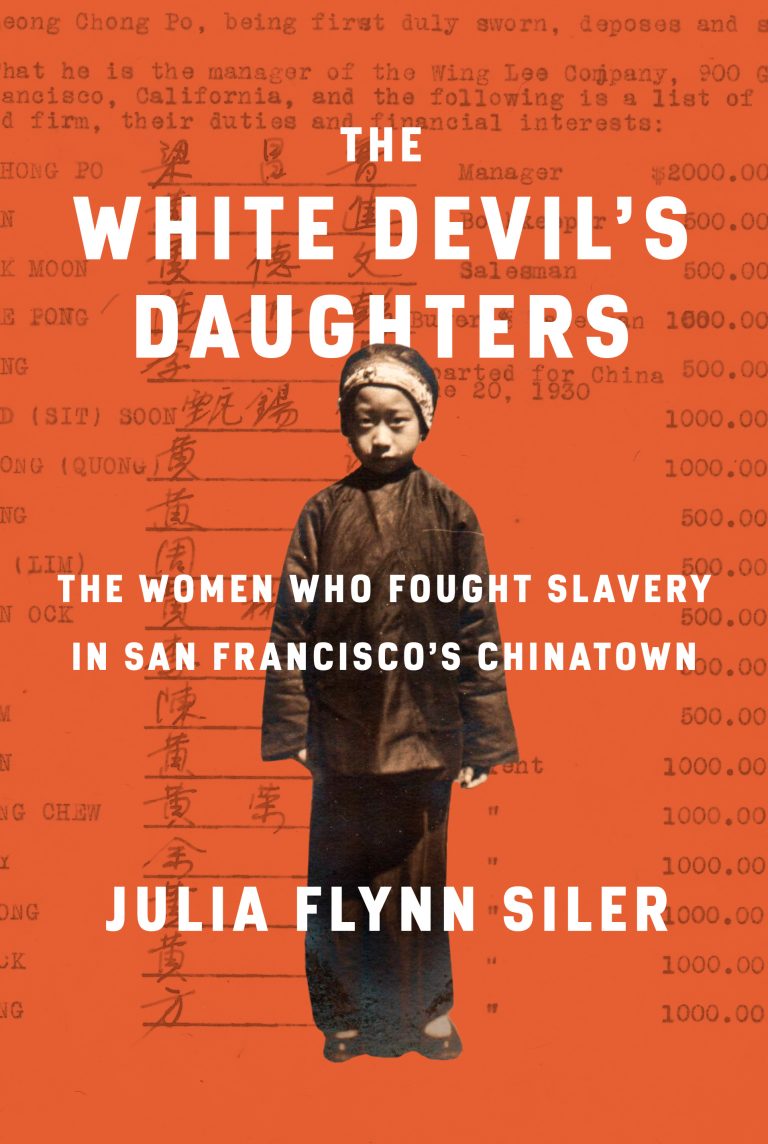A Scottish Scare: Visiting the Scotland That Inspired Mary Shelley’s ‘Frankenstein’—and the 2025 Movie
By Julia Flynn Siler | Photography by Michael Vince Kim for WSJ
Oct. 24, 2025
My recent trip to Scotland was a bit of a nightmare —but that was the point. I’d traveled to Edinburgh with a dark purpose: to uncover the grisly stories and Gothic artifacts that helped inspire Mary Shelley to write one of the world’s most enduring horror tales.

“Frankenstein” has spawned hundreds of plays, movies and comic books since it was first published in 1818. Though born in London, Shelley lived in Scotland before writing her novel and later credited the country’s bleak landscapes with giving “airy flights” to her morbid imagination.
While her personal writings during this period are scarce, she visited Edinburgh when she lived in nearby Dundee, between 1812 and 1814, according to Daniel Cook, chair of the department of English and Scottish literature at the University of Dundee. My quest, to see what threads remained between Edinburgh and her masterpiece, would lead me to a sublime restaurant housed in a 19th-century warehouse and a pub built around an animatronic monster. I would marvel at old, remarkably preserved letters and climb below the deck of a famous polar ship.
My son and I booked an apartment on Stevenlaw’s Close in Edinburgh’s Old Town, a place of towering stone facades and narrow closes (or alleys). Aptly, we arrived just before midnight to dark, quiet streets.
The next day, in the eerie morning light, I immediately understood why director Guillermo del Toro chose this area to shoot parts of his “Frankenstein” adaptation (in select theaters now and on Netflix globally on Nov. 7).
When Shelley wrote “Frankenstein,” Edinburgh had gained infamy as a site of murders and grave robberies that helped fuel a thriving trade in cadavers centered on the city’s laboratories and research hospitals. Shelley would have seen headlines about dug-up graves and sketchy doctors in the years before she put pen to paper.
Leaving the Close and its ghosts behind, we joined the “Blood and Guts” walking tour hosted by the Surgeons’ Hall Museums, part of Edinburgh’s Royal College of Surgeons. That brought us to Greyfriars Kirkyard, where many of the city’s most brazen grave robberies took place. There we heard stories of late-night confrontations between bodysnatchers and police, and admired a carving of a dancing skeleton on a famous surgeon’s memorial.
Nearby, at the Writers’ Museum, I found little trace of Shelley, but we got our fix of the macabre when we saw a plaster cast of the poet Robert Burns’s skull made 38 years after his death. In the courtyard outside the museum, we enjoyed a peaceful respite from the street performers and tour groups crowding the Royal Mile. Del Toro, I later learned, chose it for a public-hanging scene in his film.
Hoping to find more tangible vestiges of Shelley’s connections to Scotland, we went to the National Library, which houses 106 versions of her book, originally published anonymously, plus an 1818 letter from Shelley to her Scottish contemporary Sir Walter Scott. She thanks him for a favorable review, and reveals that she—and not her husband, Percy Bysshe Shelley—had written “Frankenstein.”
Across the street, at a very on-theme pub called Frankenstein, we raised a pint to this act of self- assertion while watching an animatronic monster descend from the ceiling at 30-minute intervals. The 1931 Boris Karloff version of the film played on the walls. Guests sipped Espresso Frankentinis. The woman behind my quest would have loved it, I’m sure.
The next morning, still hungry for traces of Frankenstein’s creator, but feeling the trail in Edinburgh running slightly cold, I took an hour- long train ride north to Dundee. Daniel Cook, the Dundee-based professor, picked me up at the station and took me to see the “Frankenstein steps,” what remains of the large home where Shelley lived during her Scotland stint. Shelley’s early days were “full of death,” Cook told me. As a teenager—Shelley started writing “Frankenstein” at 18—she was known to swap ghost stories with a circle of friends.
Even for a Shelley-head like me, seeing the crumbling stone steps felt a bit anticlimactic. Luckily, the V & A Dundee museum and Royal Research Ship Discovery offered much more to set my imagination alight. As a teenager at the docks of Dundee, Shelley would have seen whaling ships just like the ones on display at the museum. She would also have heard terrifying tales of explorers succumbing to the elements. Her book begins and ends on a polar ship trapped in ice.
Discovery Point’s centerpiece, the RRS Discovery, was launched in 1901, decades after “Frankenstein,” but I still loved climbing below deck to see the bunkrooms once occupied by the explorers Ernest Shackleton and Robert Falcon Scott.
Admittedly, as my quest progressed, the connections to Shelley’s tale became more tenuous. Back in Edinburgh, I treated myself to a final meal at Timberyard, a Michelin-starred restaurant in a 19th-century warehouse that once stored theatrical props and costumes for the Royal Lyceum Theatre, which has staged several adaptations of the Frankenstein story. Justification enough, I thought, to enjoy my duck breast with beetroot and Malabar pepper to the fullest.
